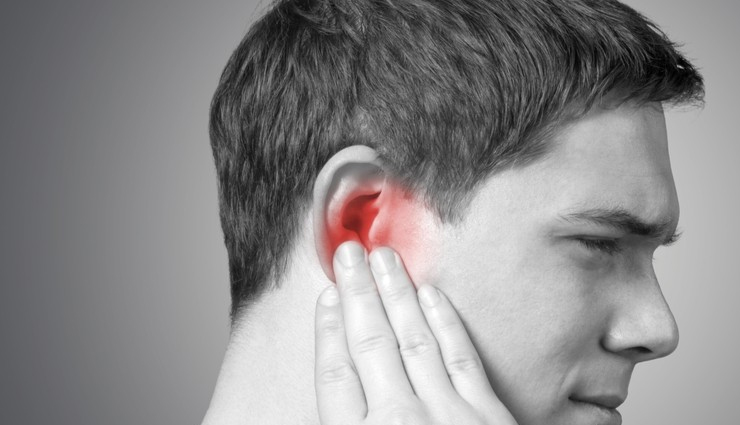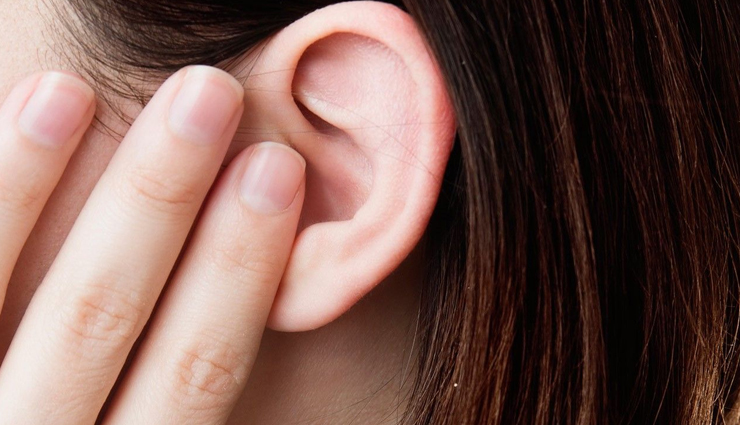- Home›
- Healthy Living›
- 5 Tips To Treat Itchy Ears At Home
5 Tips To Treat Itchy Ears At Home
By: Kratika Maheshwari Mon, 12 Sept 2022 11:26:35

Having an incessant itch in the ear that no amount of scratching can shake off can take a real toll on you. It keeps you from concentrating on anything else, sucks the fun out of everything, and makes you want to rip your ears off.
Sounds a bit extreme for a little harmless itch in the ear, but those who have suffered from it will vouch that it’s anything but little or harmless.
The human outer ear canal is very sensitive; as a result, even a sudden change in the environment in the ear canal can lead to the onset of itchy ears. The ear canal is innervated with sensitive nerves, which make the ear canal just as responsive and prone to itching as any other part of the human body.
Additionally, the fact that we cannot view our own ear canals can cause uneasiness and drive us to probe the ear recklessly and too invasively.

# Use Gravity to Remove the Fluid Buildup
If you feel like water has entered your ears during swimming or while taking a shower or bath and this is the reason behind itchiness in your ear, allow gravity to take its course and work its magic.
Gravity will help remove all the fluid buildup in the affected ear.
- Tilt the side of your head with the affected ear parallel to the ground.
- Put a clean finger in your ear.
- Now, try to create a vacuum to help dislodge the fluid.
- Use a cotton bud or towel to clean up the discharge.
You can also simply lie down on your side with a towel under your ear.
This remedy can also help to cope with a case of swimmer’s ear.

# A Little Amount of Warm Water
Flushing your ear with warm water is one of the best ways to get rid of excess earwax that can cause itchiness in the ear. The gentle force of the water will dislodge the wax, making it easier to remove from the ear. Be sure to use only distilled water; never use tap water.
A 2013 study published in the Journal of Laryngology & Otology documented that only distilled water should be used for softening earwax. The study found distilled water to be comparatively much more effective than water mixed with sodium bicarbonate or an oil-based solution for the purpose of disintegrating earwax.
- Fill a rubber bulb syringe with slightly warm distilled water.
- Tilt your head upright and pull the outer ear up and back to straighten the ear canal.
- Use the syringe to gently put a small amount of water into the ear canal.
- Leave it for a minute, and then drain it out by tilting your head to the opposite side.
- Clean away the water and earwax with a clean cloth.
- Repeat the process on the other ear.

# Olive Oil can be Beneficial
One of the most well-known home remedies to relieve an itch in the ear is olive oil.
Olive oil helps remove excess earwax and keeps your ear canal adequately lubricated. It can soften the rigid ear wax, thereby facilitating its expulsion from the ear. It also has antiseptic properties that may reduce the risk of ear infection.
A 2013 study published in Practice Nursing reported that regular olive oil lubrication may reduce itching and dryness of the ear canal skin, which often contributes to itching but may also assist in the ear’s natural cleaning ability and may help with the ear’s natural wax removal.
- Lie on your side with the affected ear facing up.
- Gently pull the outer part of your ear up and back.
- Put 2-3 drops of lukewarm olive oil in the opening of your ear using a dropper.
- Gently massage the skin at the front of the ear to help the oil work its way in.
- Remain on your side for 5 to 10 minutes.
- Wipe away any extra oil that drips from your ear when you sit up.
- Repeat in the other ear if needed.

# A Few Drops of Hydrogen Peroxide Solution
Hydrogen peroxide is very effective in dealing with itchiness in the ear due to wax buildup. In fact, many commercial ear drops contain hydrogen peroxide or a similar compound as one of the main ingredients. However, too frequent use of hydrogen peroxide in the ear canal may worsen ear canal skin dryness.
Hydrogen peroxide helps dilute the consistency of the wax and causes it to bubble up and move out of the ear.
- Mix equal parts of hydrogen peroxide (3%) and water.
- Fill an ear dropper with this solution.
- Tilt your head sideways and put a few drops of this solution into the ear. Maintain this position for some time.
- Then, tilt your head to the opposite side to drain out the solution.
- Wipe away the earwax using a clean cloth.
- Repeat this process for your other ear.
# Trust the Healing Potential of White Vinegar
White vinegar is another effective ingredient to get rid of an itchy ear.
However,
it works best when combined with rubbing alcohol. While the vinegar
helps dissolve the earwax, the rubbing alcohol serves as a drying agent
and helps evaporate any residual liquid from the ear.
Moreover, vinegar also prevents the ear from any kind of infection by maintaining an acid balance in the skin of the ear canal.
- Mix equal parts of white vinegar and rubbing alcohol in a bowl.
- Soak a cotton ball in the solution.
- Tilt the affected ear upward, pull the outer ear up and back, and then squeeze 2-3 drops of this solution into the ear.
-
Wait for 5 minutes, and then tilt your head to the opposite direction
with the treated ear down so that gravity can exert its action and pull
the solution and the wax out of the ear cavity.
- Remove the earwax from the outer ear with a tissue.





